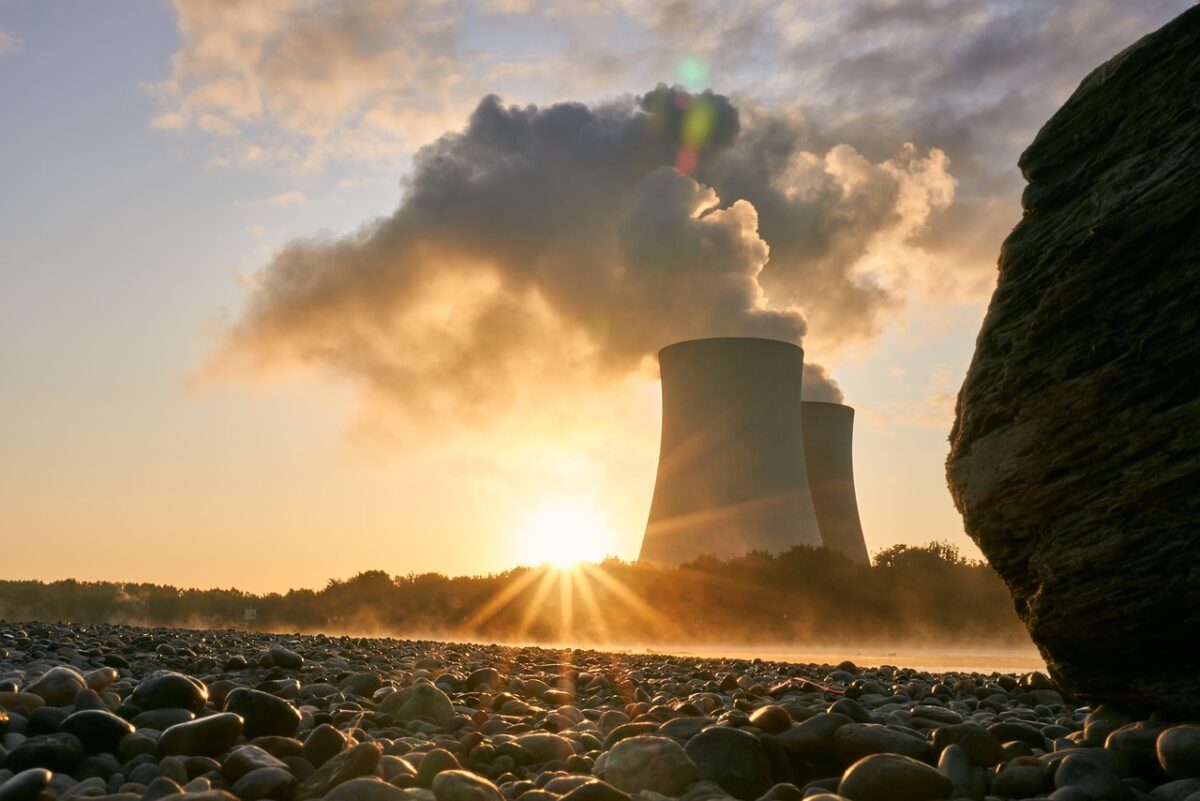From pv magazine France
A group of researchers from the European Environmental Bureau (EEB), the Stockholm School of Economics (SSE), and the Potsdam Institute for Climate Impact Research (PIK) have published new research questioning recent efforts to increase investments in nuclear power, especially in the European Union and the United States – a political choice justified by the desire to decarbonize economies as quickly as possible.
However, the researchers show that in terms of cost and speed, renewable energy sources have already beaten nuclear and that each investment in new nuclear plants delays decarbonization compared to investments in renewable energies. “In a decarbonizing world, delays increase CO2 emissions,” the researchers pointed out.
The researchers considered all planned nuclear capacities and said the increase in costs from the original project proposals is significant.
For example, they found that the delayed Flammanville project in France saw its budget increase from €3.3 billion ($3.6 billion) to €13.2 billion, noting that these figures don't even include the financing costs, which the French Court of Auditors estimated at €4.2 billion against an initial €1.2 billion.
Another example comes from Finland, where the Olkiluoto plant, which was originally planned to cost €3 billion, ended up costing around €11 billion. And this is nothing new. Already in 2014, a study on the comparative costs of electricity infrastructure found that 97% of the 180 nuclear reactor investment projects analyzed experienced cost overruns, with an average cost increase of 117% per project.
“Historically high default risk translates into higher interest rates,” the scientists emphasized. “These two factors make the profitability of nuclear projects highly dependent on financing conditions.”
In France, the national network operator RTE estimates that an electricity system including nuclear will be slightly cheaper than a system based solely on renewable energies in 2050, it is however necessary to take into account its optimism on the projections of investment. “In its calculations, RTE assumes that the investment costs for new nuclear power plants are less than two-thirds of the estimated costs of European pressurized reactor (EPR) power plants in Finland and France,” explained the researchers. “This optimism about cost reduction does not reflect the evolution of the costs of old nuclear reactors in many countries.”
According to the researchers, given the latest EPR projects and investment trends, nuclear costs will tend to increase over the next few years.
“Despite its low profitability, nuclear energy is presented as a good investment to fight against climate change. However, today, the competition for the profitability of nuclear does not come from coal or gas, but from renewable energies,” the scientists stated.
The study also questions the reliability of the nuclear fleet, particularly given the dramatically low availability of French power plants this year – nearly half of the 56 nuclear reactors were closed even though the EU was in a complicated period of electricity supply with frequent peaks in the price of electricity above €3/kWh.
The availability of this electrical source is also questioned in view of the increasingly frequent droughts expected in the coming years, causing, in particular, low river flows and therefore associated problems of cooling power plants.
“Flexibility rather than baseload generation is needed to balance a renewable energy-based power system,” the research team highlighted. “However, the ramp-up of a nuclear power plant is slow and the composition of the cost of nuclear energy does not correspond to the role of a backup technology for electrical systems with high shares of wind and solar energy.”
On a large scale, both renewables and nuclear power will have low electricity prices for much of the year, but very high prices for hundreds of hours, resulting in uncertain and highly variable revenues. According to the researchers, the backup technology in a sustainable energy mix should be a low-capital-cost, high-variable-cost power generation technology, the opposite of a nuclear power plant, which has very high upfront costs. They instead suggest the integration of storage in the form of hydrogen, using batteries or pumped hydroelectricity, based in particular on the Bloomberg analysis, which reports a price of battery storage down from $1,220 to $132 per kWh between 2010 and 2021.
“Given enough time, it may be possible to build a nuclear power plant to the highest safety standards and remain economically relevant, even taking into account the costs of storing nuclear waste for thousands of years,” the scientists concluded. “However, building nuclear power plants requires many years of planning and construction and is expensive, while the climate crisis demands urgency and requires such large investments that profitability is paramount.”
This content is protected by copyright and may not be reused. If you want to cooperate with us and would like to reuse some of our content, please contact: editors@pv-magazine.com.




The findings of this study reinforce the economic advantages of renewable energy over nuclear power. As the research highlights, renewables are not only more cost-effective but also more efficient in terms of decarbonization. At damiasolar.com, we have long recognized the potential of renewable energy to drive sustainable and profitable growth. The study’s focus on the need for flexibility and backup technology to complement renewable energy systems is a crucial insight. As we continue to address the climate crisis, it is imperative to prioritize investments that deliver both economic and environmental benefits.
Iron-air batteries are much cheaper than lithium, but also much heavier. They are suitable for stationary storage with 100 hour run times vs about 2-6 for lithium battery farms. The first commercial factory for them is under construction. Such a long run time can bridge any gaps from renewables being variable. They will also free up lithium for mobile batteries in cars and other devices, making their prices lower. By all means keep existing nuclear running as long as possible, but new nuclear just won’t be able to compete. A current example is the Vogtle 3 and 4 units just being completed. They ended up double the original cost at over $30 billion for 2.2 GW. That’s about 4 times the cost of solar per delivered kWh. That accounts for solar producing 24% of the time on average. Per installed watt the ratio is 15:1.
How can you analyze this with certainty when no-one knows how long reactors last? Modern reactors will last 40, probably 60, and maybe 80 or 100 years! Certainly that has an effect on over-all profitability. Solar and wind will need replacement in 20 to 30 years. How many years will storage batteries last before they need replacement? Lots of unanswered questions.